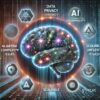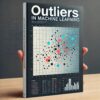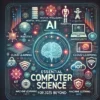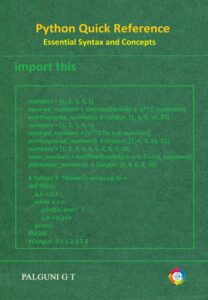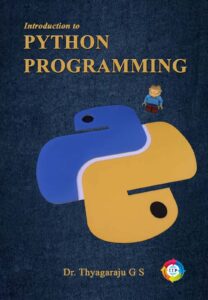“When AI is designed for understanding rather than control, it becomes a tool for inner peace, not outer pressure.”
The Rise of Dark AI: Unmasking the Threats and Ethical Challenges
Artificial Intelligence (AI) has revolutionized numerous industries, from healthcare and finance to education and cybersecurity. While ethical AI aims to benefit society by increasing efficiency, accuracy, and accessibility, the darker side of AI—referred to as Dark AI—poses significant risks. Dark AI encompasses AI models designed or manipulated for unethical, harmful, and even illegal activities. From generating phishing emails and deepfakes to automating cyberattacks, Dark AI has created new challenges for cybersecurity experts, policymakers, and businesses alike.
Challenges of Machine Learning
Machine learning (ML) has revolutionized industries, driving innovations in healthcare, finance, automation, and artificial intelligence. However, despite its immense potential, machine learning faces significant challenges that hinder its adoption and effectiveness. These challenges range from data-related issues to algorithmic complexities, scalability, and real-world deployment hurdles. This article explores the key challenges of machine learning and potential strategies to address them.
Machine Learning: What It Is, How It Works, and Its Types.
Machine Learning (ML) is a branch of artificial intelligence (AI) that enables computers to learn from data and make decisions without being explicitly programmed. Instead of relying on predefined rules, ML algorithms analyze data patterns and improve their performance over time as they are exposed to more data. This capability makes machine learning a powerful tool for automating tasks, uncovering insights, and building intelligent systems.
Uncovering Insights and Identifying Patterns in Data Science
Data Science is a powerful field that helps organizations make informed decisions by analyzing and interpreting data. Two key concepts in Data Science are insights and patterns. These elements enable businesses and researchers to understand trends, predict future behaviors, and optimize operations. In this article, we will explore what insights and patterns mean in Data Science, their significance, and real-world examples using actual datasets.
The Role of Machine Learning in Modern Technology: Need, Definition, and Its Interdisciplinary Impact
In today’s fast-paced digital world, we generate vast amounts of data every second. From social media interactions to online transactions, data is everywhere. However, making sense of this data manually is impractical. This is where Machine Learning (ML) comes in—a revolutionary technology that enables computers to learn from data and make intelligent decisions. But why do we need ML? What exactly is it? And how does it relate to other fields like Artificial Intelligence (AI), Data Science, and Statistics? Let’s explore.
Missing Data
Missing data is a common problem in machine learning and data analysis. When datasets have empty or null values, it can negatively impact model accuracy and decision-making. Handling missing data effectively is crucial for building reliable models and drawing meaningful insights. In this article, we will explore what missing data is, why it occurs, and different techniques to handle it, with real-world examples.
Dirty Data and Clean Data
Data is the foundation of machine learning and data analysis. The accuracy of a model heavily depends on the quality of the data used for training. In the world of data science, we often deal with two types of data: dirty data and clean data. Understanding these concepts is crucial for building accurate, reliable, and effective models.
Outliers
Outliers are data points that deviate significantly from the rest of the dataset. They can distort statistical analyses, degrade model performance, and mislead insights if not handled properly. In this article, we explore what outliers are, their types, methods to detect them, real-world examples, and how to deal with them in machine learning.
Bias and Variance
Bias and variance are two fundamental sources of error in machine learning models. Striking the right balance between them is crucial for building models that generalize well to unseen data. This article delves into the concepts of bias and variance, provides real-world examples, and offers a comparative analysis to better understand their impact.
The Future of AI Jobs: A Comparative Analysis of Opportunities for Aspirants With and Without AI Skills
The rapid evolution of artificial intelligence (AI) has brought about profound changes in the workforce, disrupting industries and transforming job roles. Bill Gates’ recent insights on AI’s impact underscore the need for professionals to adapt or risk obsolescence. While some jobs remain relatively secure, many roles will undergo significant changes, creating a divide between those with AI skills and those without. This article delves into the future landscape of AI-driven jobs and provides a comparative analysis of technical and software jobs for AI-skilled and non-AI-skilled aspirants.
AI Is Not a Tool; It Is an Agent!
In a thought-provoking conversation, historian and philosopher Yuval Noah Harari presented a groundbreaking perspective: artificial intelligence (AI) is not just a tool; it is an agent. This distinction is crucial to understanding the transformative power of AI in the modern world.
Top 10 Highest Paying Tech Jobs For 2025
As technology continues to drive innovation and redefine industries, tech jobs remain among the highest-paying careers globally. With advancements in AI, IoT, cloud computing, and cybersecurity, professionals in these domains are highly sought after. This article outlines the top 10 tech jobs of 2025, highlighting their roles, required skills, and earning potential.
AI Agents and Their Types
Artificial Intelligence (AI) agents are at the heart of many modern technologies, from personal voice assistants to self-driving cars and sophisticated recommendation systems. These agents act autonomously in various environments, analyzing data, making decisions, and carrying out actions to achieve specific goals. As AI continues to evolve, understanding the different types of AI agents and their applications becomes essential for appreciating how these technologies impact our daily lives and industries.
Top 10 Technology Trends for 2025
Gartner Inc. recently shared its top 10 technology trends for 2025 at their IT Symposium. These trends focus on how AI, new computing methods, and better human-machine partnerships will shape the future. Here’s a look at each trend, explained in simple terms.
Essential Computer Science Skills for 2025 and Beyond
As we advance into a more technology-driven future, the demand for specialized computer science skills has reached unprecedented heights. Emerging technologies like Artificial Intelligence (AI), robotics, Internet of Things (IoT), and AI-driven agents are transforming industries and opening up new career paths. For professionals and students alike, the path forward requires an understanding of the key skills that will dominate the field in 2025 and beyond.
Let’s dive into the essential computer science skills needed to stay relevant and competitive in this evolving landscape.
Introducing the Next Frontier of Generative AI: AI Agents
The recent boom in generative AI has set the stage for a meteoric rise in AI agents. Industry projections estimate the market for AI agents will grow from USD 5.1 billion in 2024 to an impressive USD 47.1 billion by 2030. This remarkable growth, characterized by a compound annual growth rate (CAGR) of 44.8%, is fueled by breakthroughs in generative AI, enabling Agentic AI to perform increasingly complex tasks with minimal human intervention.
AI and Human Philosophy: A Comparative Analysis of Intelligence and Consciousness
The philosophy of Artificial Intelligence (AI) grapples with a set of profound questions: Can a machine act intelligently? Is machine intelligence comparable to human intelligence? Can machines experience mental states, consciousness, or emotions? These questions have sparked a philosophical debate that spans the boundaries between technology and human thought, challenging longstanding ideas in the realm of epistemology, ethics, and consciousness. In this article, we will explore the philosophy of AI and compare it with various types of human philosophies, examining how each attempts to address these questions
Comparative Analysis of the Philosophies of Lord Krishna, Shankaracharya, Buddha, and Mahavira
Indian philosophy is enriched by a vast array of spiritual teachings, with key figures such as Lord Krishna, Adi Shankaracharya, Gautama Buddha, and Mahavira providing transformative insights into the nature of existence, the soul, and the path to liberation. Though their teachings differ in various aspects, they share common threads that contribute to the profound spiritual heritage of India. This article provides a comparative analysis of the philosophies of these four great spiritual leaders.
The 2024 Nobel Award in Physics: Celebrating Pioneers in Artificial Intelligence and Neural Networks
This year’s Nobel Prize in Physics celebrates the groundbreaking contributions of John J. Hopfield and Geoffrey E. Hinton, whose work on artificial neural networks has had profound impacts on both artificial intelligence and physics.
Hypothetical Quantum Vehicles
As technology continues to evolve, transportation is poised for another significant transformation. The statement “Future is only for quantum vehicles, neither electric vehicles nor classical vehicles” suggests a bold vision for the future, where quantum technology overtakes both traditional gasoline-powered cars and modern electric vehicles (EVs). While electric vehicles have already made impressive strides in terms of sustainability and reduced emissions, the potential emergence of quantum vehicles may render both classical and electric models obsolete.


